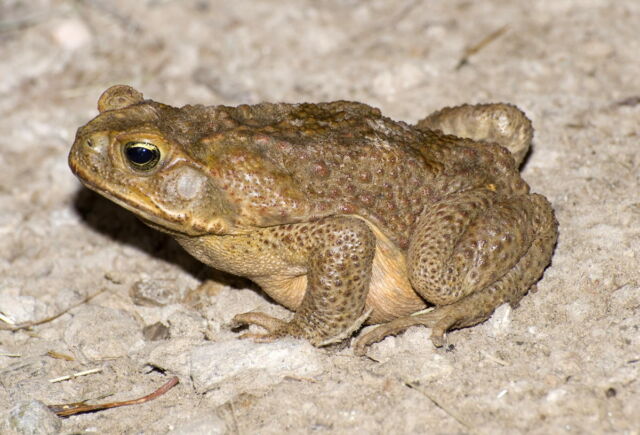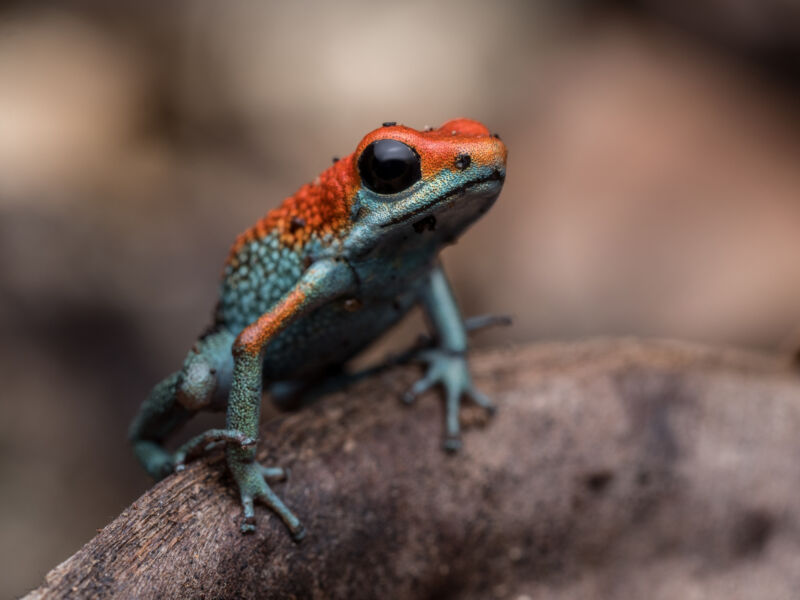From the brightly coloured poison frogs of South America to the prehistoric-looking newts of the Western US, the world is filled with beautiful, deadly amphibians. Just a few milligrams of the newt’s tetrodotoxin can be fatal, and some of those frogs make the most potent poisons found in nature.
In recent years, scientists have become increasingly interested in studying poisonous amphibians and are starting to unravel the mysteries they hold. How is it, for example, that the animals don’t poison themselves along with their would-be predators? And how exactly do the ones that ingest toxins in order to make themselves poisonous move those toxins from their stomachs to their skin?
Even the source of the poison is sometimes unclear. While some amphibians get their toxins from their diet, and many poisonous organisms get theirs from symbiotic bacteria living on their skin, still others may or may not make the toxins themselves — which has led scientists to rethink some classic hypotheses.
Deadly defenses
Over the long arc of evolution, animals have often turned to poisons as a means of defense. Unlike venoms — which are injected via fang, stinger, barb, or some other specialized structure for offensive or defensive purposes — poisons are generally defensive toxins a creature makes that must be ingested or absorbed before they take effect.
Amphibians tend to store their poisons in or on their skin, presumably to increase the likelihood that a potential predator is deterred or incapacitated before it can eat or grievously wound them. Many of their most powerful toxins — like tetrodotoxin, epibatidine and the bufotoxins originally found in toads — are poisons that interfere with proteins in cells, or mimic key signaling molecules, thus disrupting normal function.
That makes them highly effective deterrents against a wide range of predators, but it comes with a problem: The poisonous animals also have those susceptible proteins — so why don’t they get poisoned too?

It’s a question that evolutionary biologist Rebecca Tarvin took up when she was a graduate student at the University of Texas at Austin. Tarvin opted to study epibatidine, one of the most potent poisons of the thousand-plus known poison frog compounds. It’s found in frogs such as Anthony’s poison arrow frog (Epipedobates anthonyi), a small, ruddy creature with light-greenish-white splotches and stripes. Epibatidine binds to and activates a receptor for a nerve-signaling molecule called acetylcholine. This improper activation can cause seizures, paralysis and, eventually, death.
Tarvin hypothesized that the frogs, like some other poisonous animals, had evolved resistance to the toxin. She and her colleagues identified mutations in the genes for the acetylcholine receptor in three groups of poison frogs, then compared the activity of the receptor with and without the mutation in frog eggs. The mutations slightly changed the receptor’s shape, the team found, making epibatidine bind less effectively and limiting its neurotoxic effects.



3175x175(CURRENT).thumb.jpg.b05acc060982b36f5891ba728e6d953c.jpg)

Recommended Comments
There are no comments to display.
Join the conversation
You can post now and register later. If you have an account, sign in now to post with your account.
Note: Your post will require moderator approval before it will be visible.